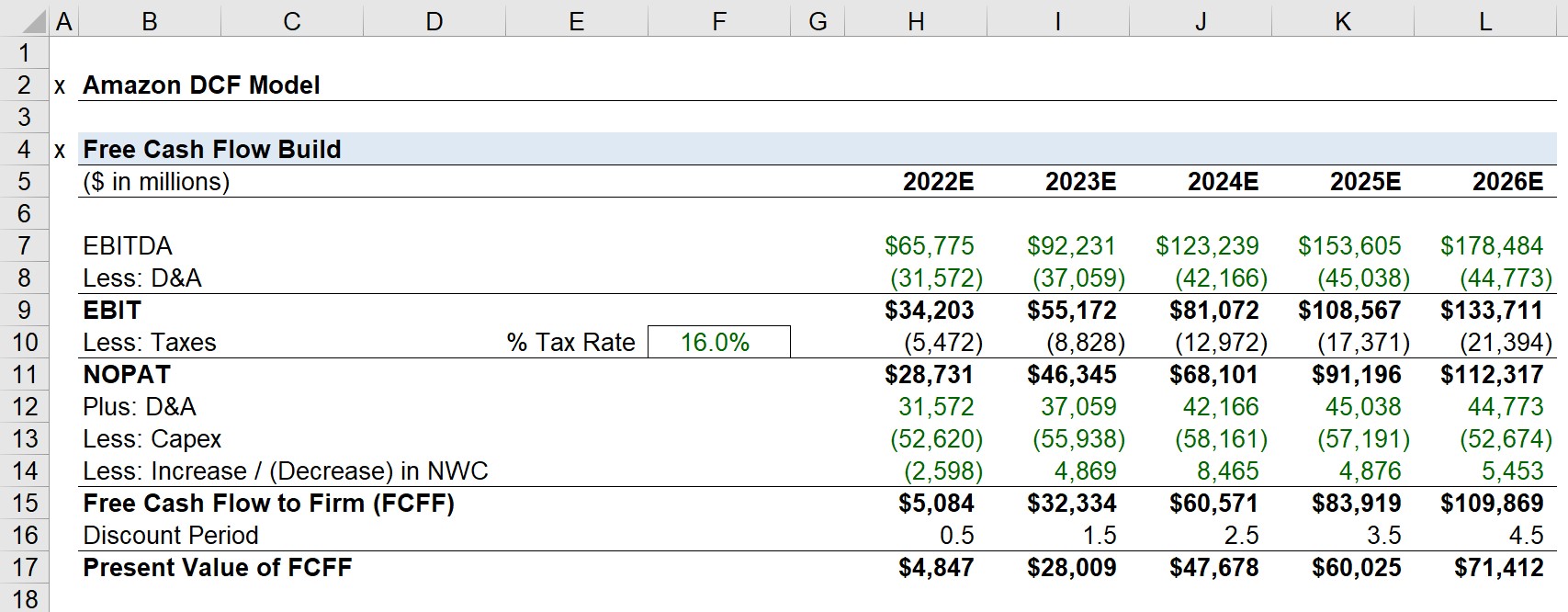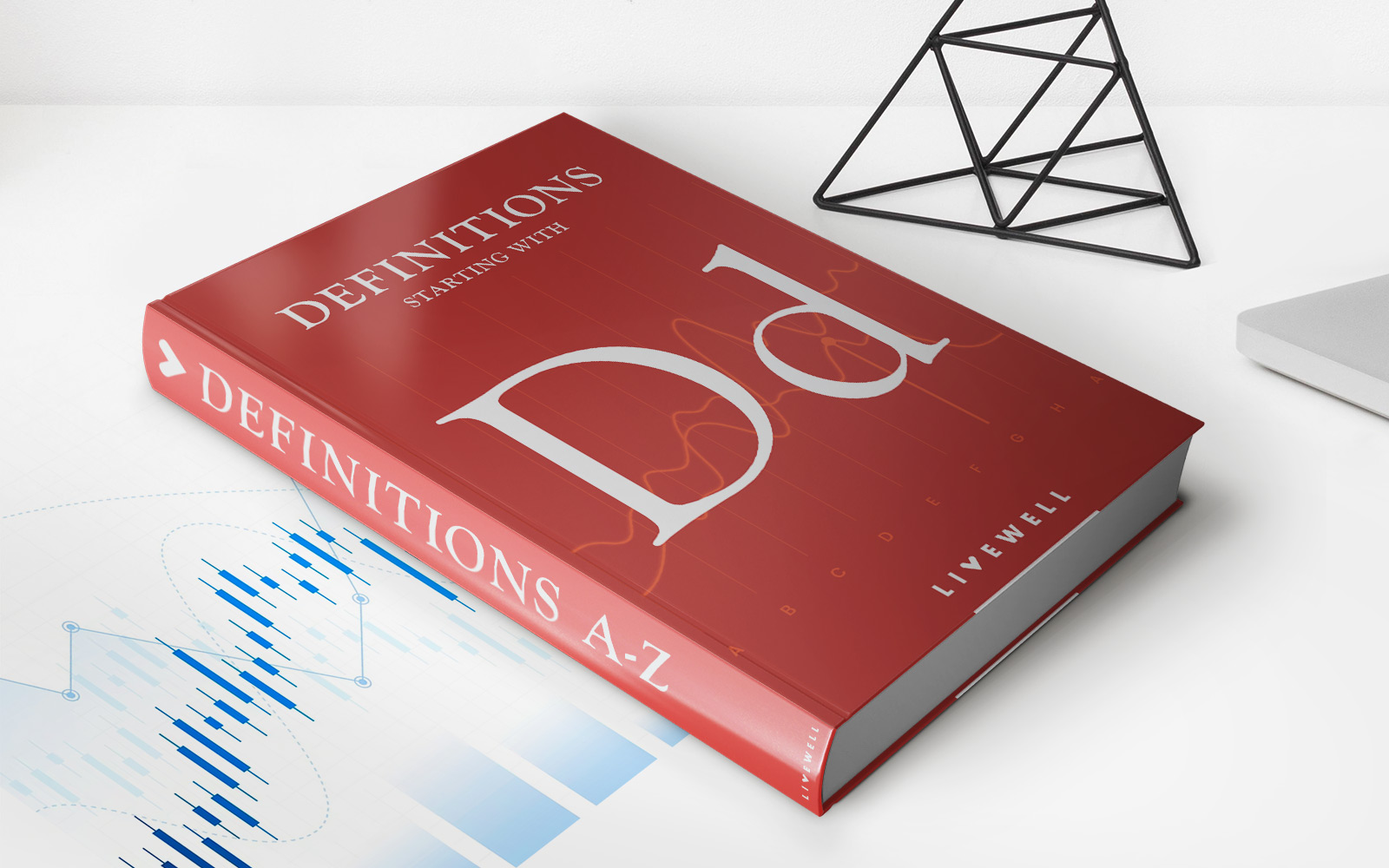

Finance
What Is Capital Structure Decision
Modified: March 1, 2024
Learn the importance of finance in capital structure decisions and how it impacts a company's long-term financial health. Find expert advice and strategies for effective financial planning.
(Many of the links in this article redirect to a specific reviewed product. Your purchase of these products through affiliate links helps to generate commission for LiveWell, at no extra cost. Learn more)
Table of Contents
- Introduction
- Definition of Capital Structure Decision
- Factors Affecting Capital Structure Decision
- Importance of Capital Structure Decision
- Advantages and Disadvantages of Different Capital Structures
- Key Considerations in Making Capital Structure Decisions
- Case Studies on Capital Structure Decision
- Best Practices for Capital Structure Decision
- Conclusion
Introduction
Welcome to the world of finance, where decisions are made to optimize and maximize the value of a company. One crucial decision that every business needs to make is the capital structure decision. This decision plays a vital role in determining how a company finances its operations and investments.
Capital structure refers to the mix of debt and equity a company utilizes to finance its activities. It involves deciding the proportion of debt and equity in a company’s financial structure. Debt represents borrowed money that needs to be repaid, while equity represents ownership in the company.
Choosing the right capital structure is crucial because it can significantly impact a company’s profitability, financial stability, and ability to grow. By understanding the factors that affect capital structure decisions and weighing the advantages and disadvantages of different capital structures, businesses can make informed choices to achieve their financial goals.
This article will delve into the definition of capital structure decisions, discuss the factors that influence these decisions, highlight the importance of capital structure decisions, explore the advantages and disadvantages of different capital structures, analyze key considerations in making these decisions, present case studies, provide best practices, and ultimately, equip you with the knowledge you need to make sound capital structure decisions for your company.
Definition of Capital Structure Decision
Capital structure decision refers to the process of determining the ideal combination of debt and equity financing for a company. It involves evaluating and selecting the right proportion of debt and equity to maintain the financial stability and maximize the value of the business.
Debt financing includes borrowing funds from external sources such as banks, financial institutions, or issuing bonds. This borrowed money must be repaid with interest over a specific period of time.
Equity financing, on the other hand, involves raising capital by selling ownership shares in the company. This can be done through the issuance of common stock or by attracting investors who contribute financially in exchange for a percentage of ownership and potential future profits.
The capital structure decision is all about finding the optimal balance between debt and equity that minimizes the cost of capital while maximizing the return to shareholders. The decision should take into account the financial capacity of the company, its risk tolerance, and its growth objectives.
It is important to note that the capital structure decision is not a one-time event but an ongoing process. As a company evolves and faces different circumstances, it may need to revisit its capital structure to ensure it aligns with its changing needs.
Factors such as industry norms, market conditions, business risk, tax considerations, and the company’s creditworthiness all play a role in determining the appropriate capital structure. Companies with higher creditworthiness and stable cash flows may be able to take on more debt, while those with uncertain future cash flows may opt for a higher proportion of equity financing.
Overall, the capital structure decision is a fundamental aspect of financial management that impacts the business’s ability to raise funds, manage risk, and achieve its long-term objectives. By accurately assessing and determining the optimal capital structure, companies can position themselves for growth, profitability, and sustainability.
Factors Affecting Capital Structure Decision
When making capital structure decisions, several factors come into play that can influence the optimal mix of debt and equity financing for a company. Understanding and carefully considering these factors is essential for making informed and effective decisions. Let’s take a closer look at some of the key factors that can impact capital structure decisions:
- Business Risk: The level of business risk associated with a company’s operations can influence its capital structure decision. If a company operates in a stable industry with consistent cash flows, it may be more comfortable taking on higher levels of debt. However, if a company operates in a highly volatile and uncertain industry, it may choose a more conservative capital structure with lower levels of debt.
- Financial Flexibility: Companies need to assess their financial flexibility before making capital structure decisions. If a company has limited access to additional sources of funding or faces restrictions on raising debt, it may be more prudent to rely on equity financing to maintain financial flexibility.
- Tax Considerations: The tax environment can have a significant impact on capital structure decisions. Interest expenses on debt are typically tax-deductible, which can provide tax advantages for companies. This tax shield on debt can make debt financing more attractive compared to equity financing.
- Creditworthiness: The creditworthiness of a company, as assessed by credit rating agencies, can influence its ability to raise debt. Companies with higher credit ratings can access debt financing at lower interest rates, making it an attractive option. On the other hand, companies with lower credit ratings may have limited access to debt financing or face higher borrowing costs.
- Cost of Capital: The cost of capital is an important consideration in capital structure decisions. The cost of debt and equity differ, and companies need to evaluate the impact of different capital structures on their overall cost of capital. A lower cost of capital can enhance a company’s profitability and valuation.
- Growth Opportunities: The growth prospects of a company can influence its capital structure decision. Companies with significant growth opportunities may opt for equity financing to fuel their expansion plans. At the same time, more mature companies with fewer growth prospects may rely more on debt financing.
- Market Conditions: The overall market conditions and investor sentiment can impact a company’s capital structure decision. During favorable market conditions with high investor confidence, companies may find it easier to raise equity financing. Conversely, during challenging market conditions, companies may need to rely more on debt financing.
It is essential for companies to carefully analyze these factors and their specific circumstances before making capital structure decisions. Each company is unique, and the optimal capital structure will vary depending on its industry, size, risk profile, and growth objectives. By considering these factors in conjunction with the company’s financial goals, management can make well-informed decisions that support long-term success.
Importance of Capital Structure Decision
The capital structure decision holds significant importance for businesses as it directly impacts their financial stability, profitability, and long-term sustainability. Let’s explore why the capital structure decision is crucial for companies:
- Optimal Use of Resources: The capital structure decision allows companies to effectively allocate their financial resources. By carefully balancing debt and equity, companies can optimize their use of capital to fund growth initiatives, invest in new projects, and enhance operational efficiency.
- Minimizing Cost of Capital: Selecting an appropriate capital structure can help companies minimize their overall cost of capital. Debt financing often carries lower interest rates than equity financing, allowing companies to reduce the cost of raising funds and improving their profitability. By leveraging debt efficiently, companies can achieve a balance between minimizing cost and managing risk.
- Enhancing Financial Flexibility: A well-thought-out capital structure decision can provide companies with the financial flexibility they need to navigate through various business cycles and unforeseen circumstances. By maintaining an optimal mix of debt and equity, companies can have access to different sources of funding and the ability to manage their cash flows effectively.
- Managing Risk: The capital structure decision plays a vital role in managing risk for companies. Having too much debt can increase financial risk and make it difficult for companies to meet their debt obligations. On the other hand, relying heavily on equity financing dilutes ownership and reduces the risk of bankruptcy. Striking the right balance between debt and equity allows companies to manage risk appropriately, limiting the potential negative impact on their financial health.
- Increasing Shareholder Value: The capital structure decision can significantly impact a company’s shareholder value. By optimizing the capital structure, companies can enhance their return on equity, attract investors, and increase the value of ownership stakes. This, in turn, leads to a higher market valuation and improved access to capital.
- Facilitating Growth and Expansion: Choosing the right capital structure is crucial for companies looking to pursue growth and expansion opportunities. A well-designed capital structure provides the necessary financial resources to invest in research and development, acquire new assets, expand into new markets, and execute strategic initiatives. It creates a solid foundation for sustainable growth and positions the company for long-term success.
Overall, the capital structure decision is vital for companies as it has a direct impact on their financial performance, risk management, shareholder value, and growth prospects. It requires careful analysis, consideration of various factors, and a balance between debt and equity to ensure the company’s financial stability and prosperity in the dynamic business environment.
Advantages and Disadvantages of Different Capital Structures
Choosing the right capital structure is a critical decision for businesses, as it can have both advantages and disadvantages. Different capital structures offer unique benefits and drawbacks, and understanding them is crucial for making informed decisions. Let’s explore the advantages and disadvantages of different capital structures:
Debt Financing:
- Advantages:
- Lower Cost of Capital: Debt financing generally carries a lower cost compared to equity financing. This can lead to reduced interest expenses and, therefore, improved profitability.
- Tax Benefits: Interest payments on debt are typically tax-deductible, providing tax advantages for companies and reducing their overall tax liability.
- Retain Ownership Control: By utilizing debt financing, companies can retain ownership control since they do not have to issue additional shares or dilute existing ownership.
- Fixed Interest Payments: Debt financing involves fixed interest payments, allowing companies to plan and budget accordingly.
- Disadvantages:
- Financial Risk: Heavy reliance on debt increases financial risk. Companies must ensure they have sufficient cash flow to meet interest and principal payments, especially during economic downturns or periods of low profitability.
- Restrictions and Covenants: Lenders often impose certain restrictions and covenants on companies when providing debt financing. These limitations can limit the company’s flexibility in making business decisions.
- Potential Default: Inability to repay debt obligations can lead to default, damaging the company’s credit rating and making it difficult to secure future financing.
Equity Financing:
- Advantages:
- No Obligations: Unlike debt financing, equity financing does not come with any repayment obligations. Companies do not need to make regular interest or principal payments.
- No Financial Risk: Equity financing does not create financial risk since there are no fixed payments that need to be made. Equity investors bear the risk of loss if the company performs poorly.
- No Debt Covenants: Equity financing does not typically impose restrictions or covenants on the company, providing more flexibility in decision-making.
- Disadvantages:
- Dilution of Ownership: By issuing equity to raise funds, ownership in the company is diluted, reducing the percentage of ownership held by existing shareholders.
- Loss of Control: Equity investors often have voting rights and may influence key business decisions, potentially leading to a loss of control for the company’s founders or existing shareholders.
- Higher Cost of Capital: Equity financing generally carries a higher cost compared to debt financing. Investors expect a higher return on their investment to compensate for the risk they undertake.
It is important to note that the advantages and disadvantages of different capital structures can vary depending on the specific circumstances and goals of the company. A balanced capital structure that combines both debt and equity elements may be the most appropriate approach for many businesses, as it allows them to leverage the benefits of both financing options while mitigating the associated drawbacks.
Key Considerations in Making Capital Structure Decisions
Making sound capital structure decisions requires a careful evaluation of various factors and considerations. Below are key considerations that businesses should take into account when determining their optimal capital structure:
- Business Goals and Strategy: The capital structure should align with the overall goals and strategic objectives of the business. Companies need to assess whether they prioritize rapid growth, profitability, or financial stability and tailor their capital structure accordingly.
- Risk Tolerance: Each company has a unique risk tolerance level. It’s crucial to evaluate the level of risk that the company is comfortable taking on and select a capital structure that reflects this risk appetite. Companies in stable industries may tolerate higher debt levels, while companies in unpredictable industries may opt for a more conservative structure.
- Operating Cash Flows: Assessing the stability and predictability of operating cash flows is essential in determining the appropriate level of debt in the capital structure. Companies with steady and reliable cash flows can comfortably handle higher levels of debt, while companies with volatile or uncertain cash flows may need to rely more on equity financing.
- Tax Considerations: Companies should evaluate the tax implications associated with different capital structures. Debt financing offers interest tax deductions, reducing the overall tax burden, whereas equity financing does not have the same tax advantages. Taking into account the company’s tax position can help optimize the capital structure decision.
- Industry Norms and Peer Analysis: Understanding the capital structure norms within the industry and comparing with peer companies can provide valuable insights. Analyzing how similar companies in the industry have structured their capital can inform the optimal debt-to-equity ratio for a particular business.
- Cost of Capital: Evaluating the cost of different sources of financing is critical. Comparison of the cost of debt and equity allows companies to determine the most cost-effective capital structure that minimizes the overall cost of capital while maximizing profitability.
- Market Conditions: The prevailing market conditions and investor sentiment can influence the availability and cost of different financing options. During periods of economic uncertainty or tight credit markets, companies may face challenges in accessing debt financing. Understanding market conditions is crucial in adapting the capital structure accordingly.
- Future Growth Plans: A company’s growth plans and investment requirements should be taken into consideration. Companies aiming for aggressive expansion may require more equity financing to fund their growth initiatives. On the other hand, companies with limited growth prospects may opt for a more debt-heavy structure.
- Flexibility and Financial Resilience: Assessing the company’s need for financial flexibility and resilience is essential. Companies experiencing fluctuations in cash flows, market uncertainty, or seasonal variations may prioritize a capital structure that provides them with the necessary flexibility to adapt to changing conditions.
It is important to note that finding the optimal capital structure requires a careful balance between these considerations. There is no one-size-fits-all approach, and the ideal capital structure may evolve over time as the company’s circumstances change. Regular analysis, monitoring, and adjustments to the capital structure are necessary to align with the company’s changing needs and goals.
Case Studies on Capital Structure Decision
Examining real-life case studies can provide valuable insights into the capital structure decisions made by companies in different industries. Here are a few notable examples:
Case Study 1: Apple Inc.
Apple Inc., one of the world’s most valuable companies, has made strategic capital structure decisions to support its growth and financial success. In the early 2000s, Apple faced a declining market share and financial challenges. Steve Jobs, Apple’s co-founder, implemented a capital structure decision that involved bringing in a significant amount of debt to fund share buybacks and dividend payments. The goal was to optimize the company’s capital structure and return value to shareholders while benefiting from the tax advantages of debt financing. By using debt smartly, Apple was able to maintain its cash reserves and liquidity, while also reducing its overall cost of capital.
Case Study 2: Tesla Inc.
Tesla Inc., the innovative electric vehicle manufacturer, has taken a unique approach to its capital structure decision. Despite being a relatively young company, Tesla has relied heavily on equity financing to fund its growth initiatives. The company pursued multiple rounds of fundraising through stock offerings to raise capital for research, development, and expansion of its electric vehicle production. By opting for equity financing, Tesla has been able to attract a strong investor base and fund its ambitious plans for the future. However, this approach has also resulted in dilution of existing shareholders’ ownership and increased the cost of capital due to higher expectations on future returns.
Case Study 3: Coca-Cola Company
The Coca-Cola Company, a global beverage giant, has historically maintained a conservative capital structure. The company has focused on a balanced mix of debt and equity financing to support its operations and growth. Coca-Cola has taken advantage of its strong credit rating to access debt financing at favorable interest rates, allowing it to benefit from the tax advantages of debt while maintaining financial flexibility. By carefully managing its debt levels and consistently generating strong cash flows, Coca-Cola has maintained a stable capital structure that supports its long-term sustainability and profitability.
These case studies exemplify the diverse approaches companies can take when making capital structure decisions. Each decision is unique, reflecting the company’s specific circumstances, growth plans, risk tolerance, and market conditions.
It is crucial for companies to analyze these case studies and draw lessons from them. Understanding how successful companies have navigated their capital structure decisions can serve as a guide for making informed choices and optimizing their own capital structures.
Best Practices for Capital Structure Decision
When it comes to making capital structure decisions, there are several best practices that can guide companies toward optimal outcomes. These practices are based on industry standards and the experiences of successful businesses. Consider the following best practices for capital structure decision-making:
- Thorough Analysis and Planning: Conduct a comprehensive analysis of the company’s financial position, growth prospects, and risk profile. This analysis should involve evaluating industry norms, market conditions, and the company’s individual circumstances. Use this information to create a well-informed capital structure plan.
- Consider Long-Term Objectives: Look beyond short-term goals when shaping the capital structure. Consider the long-term vision of the company and assess how the chosen structure aligns with growth plans, profitability targets, and shareholder value creation.
- Balance Debt and Equity: Strive for a balanced mix of debt and equity that suits the company’s risk tolerance, financial stability needs, and growth aspirations. Avoid relying too heavily on one form of financing, as this can increase risk or limit future growth opportunities.
- Optimize Cost of Capital: Evaluate the cost of different sources of financing and aim to minimize the overall cost of capital. Consider both the cost of debt (interest rates, fees) and the cost of equity (required return and shareholder expectations) when determining the best financing mix.
- Assess Tax Implications: Consider the tax benefits of debt financing, such as interest deductibility, and evaluate how the chosen capital structure can optimize the company’s tax position. However, ensure that the tax benefits align with the company’s long-term financial objectives and risk appetite.
- Maintain Financial Flexibility: Preserve financial flexibility by avoiding excessive financial obligations that could strain the company’s cash flow or limit its ability to invest in growth initiatives. A flexible capital structure allows the company to adapt to changing market conditions and unforeseen circumstances.
- Regular Monitoring and Adjustments: Continuously evaluate and monitor the company’s capital structure to ensure it remains aligned with the company’s evolving needs. Be prepared to make adjustments as the business landscape changes, market conditions fluctuate, or new growth opportunities arise.
- Engage Professionals: Seek the expertise of financial advisors, accountants, and legal professionals with experience in capital structure decisions. Their guidance can help navigate complex financial considerations, regulations, and potential risks.
- Consider Market Perception: Take into account how the capital structure decision may be perceived by the market and stakeholders. The chosen structure should instill confidence in investors, lenders, and other key stakeholders, contributing to the company’s reputation and access to future funding.
It’s important to note that best practices may vary depending on the specific circumstances and industry. Companies should evaluate these best practices in conjunction with their unique needs and consult with professionals to tailor them to their individual situation.
By following these best practices, companies can make well-informed capital structure decisions that align with their financial goals, optimize their cost of capital, and position them for long-term success.
Conclusion
Effective capital structure decision-making is crucial for businesses to achieve financial stability, maximize profitability, and support their growth objectives. The capital structure, which determines the mix of debt and equity financing, plays a significant role in shaping a company’s financial health and long-term sustainability.
In this article, we explored the definition of capital structure decision and discussed the factors that can influence this decision. We also highlighted the importance of capital structure decision-making, emphasizing the advantages and disadvantages of different capital structures. Additionally, we examined key considerations that businesses should take into account and examined real-life case studies to gain insights into capital structure decision-making.
We identified several best practices that can guide companies towards optimal capital structure decisions. These practices include a thorough analysis of the company’s financial position and risk profile, considering long-term objectives, balancing debt and equity, optimizing the cost of capital, assessing tax implications, maintaining financial flexibility, and monitoring and adjusting the capital structure as needed.
It is important to note that capital structure decisions are not one-size-fits-all and should be tailored to each company’s specific circumstances and goals. Regular evaluation and adjustment of the capital structure are crucial to ensure it remains aligned with the company’s evolving needs and market conditions.
By following best practices and making informed capital structure decisions, companies can position themselves for financial success, reduce risk exposure, and create value for shareholders. The capital structure decision, when approached strategically and thoughtfully, can be a powerful tool to drive business growth and long-term sustainability.














